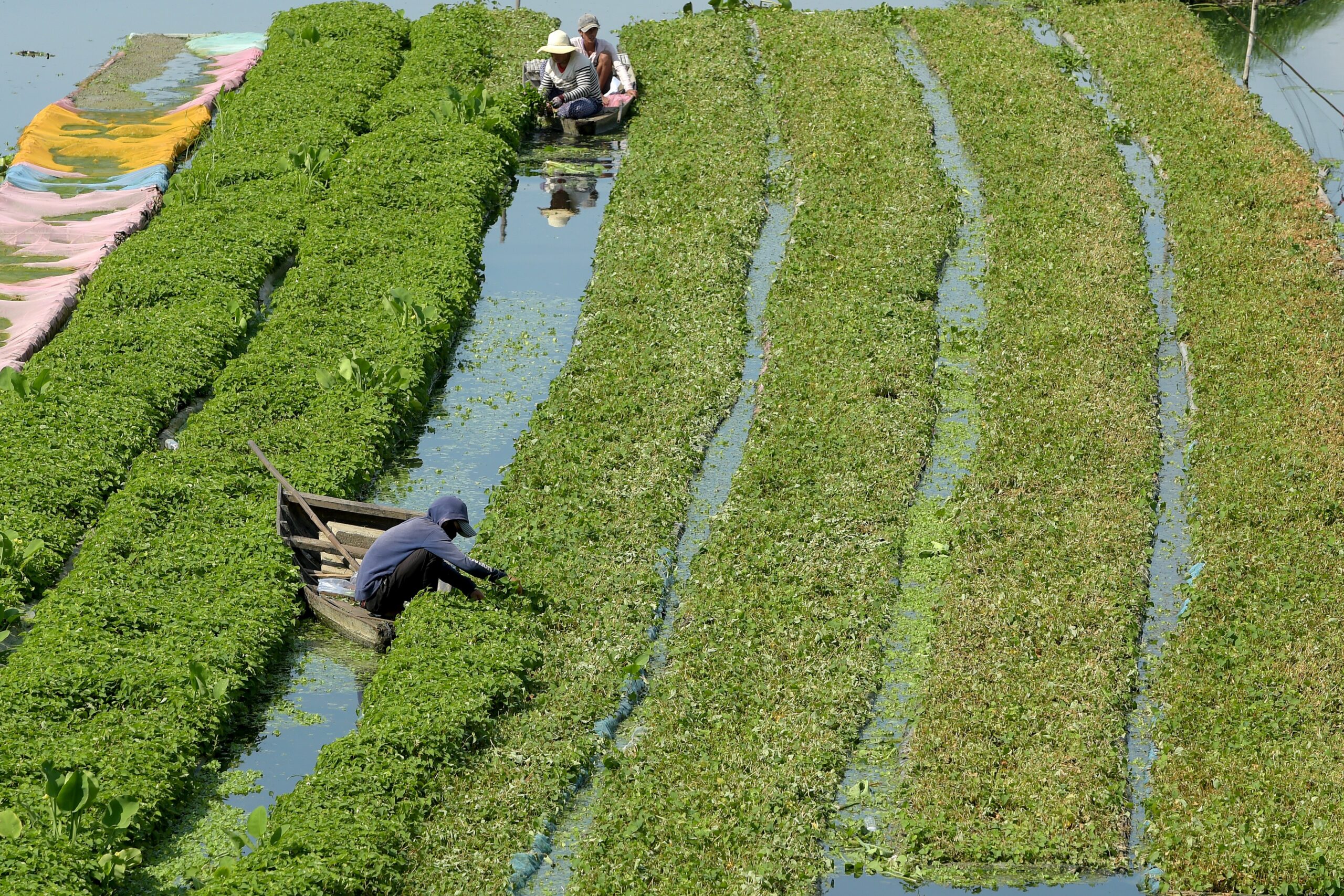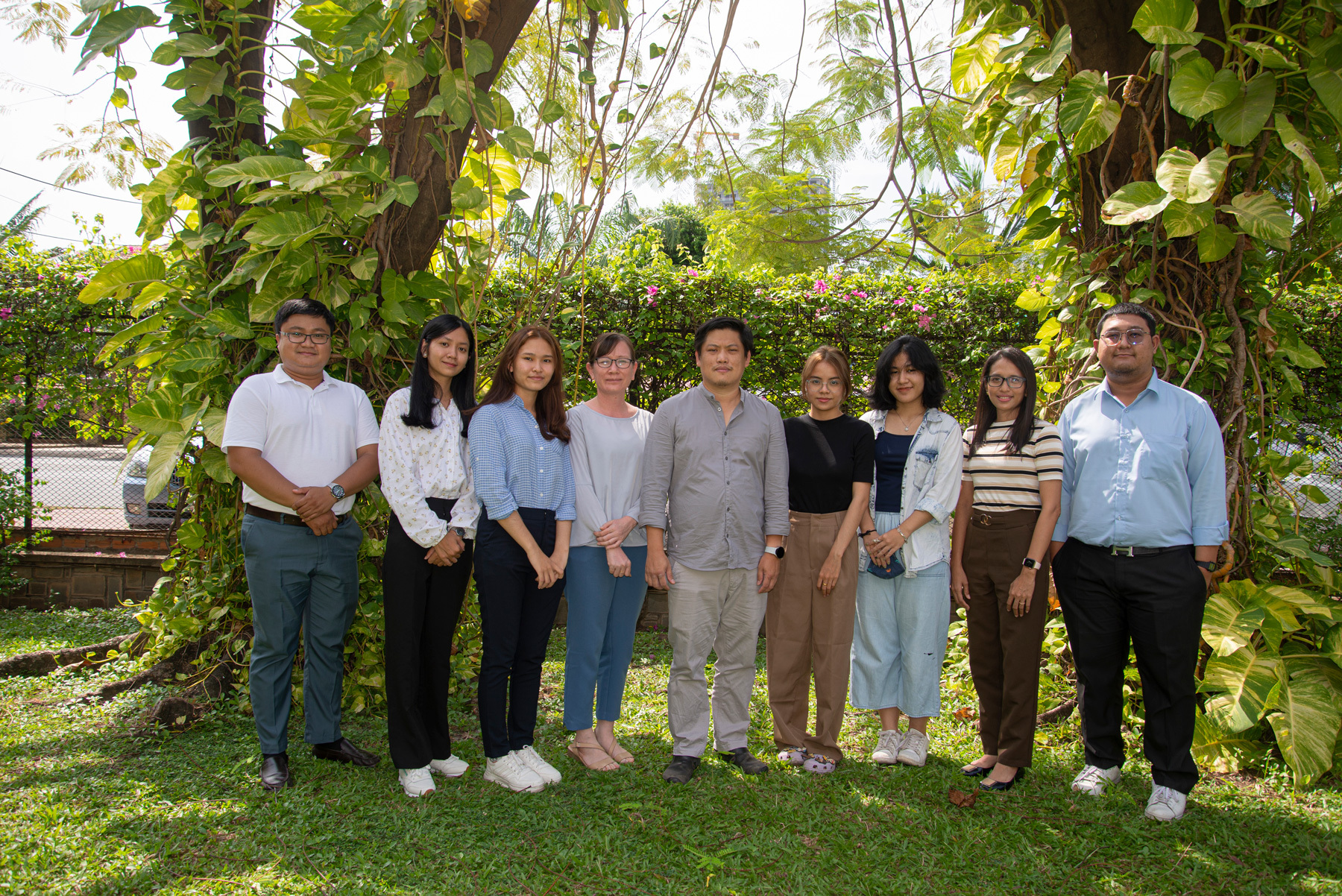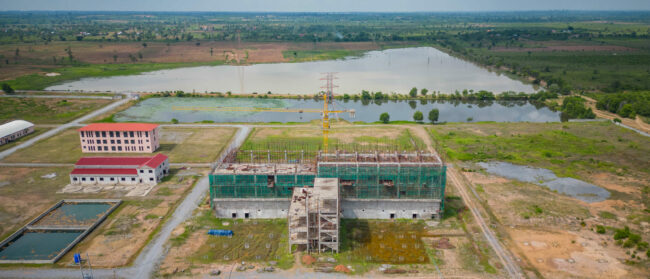LAND OF PLENTY: CHALLENGES AND OPPORTUNITIES FOR CAMBODIAN AGRICULTURE
Playing an influential role in Cambodia’s culture and economy, agriculture is a pillar of CDRI’s work, with the Centre for Policy Research in Agriculture and Rural Development turning its attention to this vital sector
Words by Stew Post
Situated in the heart of the Mekong River basin, Cambodia’s fertile soil and seasonal rains have supported an agricultural society that goes back centuries. Today, verdant rice fields, sprawling fruit plantations and freshwater fisheries continue to provide livelihoods for millions of Cambodians and hold promise for the future of the nation.
Charting some of the strongest and most consistent economic growth in the region, Cambodia owes its progress over the past thirty years to a host of factors. As the Paris Peace Agreements signalled an end to the conflicts of previous decades, foreign aid poured into the country and Cambodia quickly became an attractive destination for the garment industry, tourism and, in more recent years, construction development. However, throughout these rapid changes, agriculture remained the foundation upon which Cambodian society and economic growth were built.
“Our rural population is still large and we have a lot of good agricultural land, around Tonle Sap lake, the Mekong Delta and in the mountains as well,” explained Sokcheng Sim, director of Cambodia Development Resource Institute’s (CDRI) Centre for Policy Research in Agriculture and Rural Development (CPARD). “Even though agriculture doesn’t generate the same money as factories and other sectors, it is still important because people rely on these natural resources.”

Focused on improving the livelihoods of Cambodian farmers, CPARD research takes aim at shortcomings in agricultural production.
The 2018-2020 study, On-farm Food Safety in Horticulture in Cambodia: The Case of Vegetable Farming, examined reasons behind the country’s reliance on imported produce and recommended strategies to increase supply and promote demand for local vegetables. In particular, the use of pesticides was scrutinised as compliance with internationally recognised Good Agricultural Practices (GAP) is considered a key strategy for improving the competitiveness of Cambodian agri-products.
The study filled a gap in existing research and provided important insights on ways to influence farmer perceptions and use of pesticides. It also suggested there is space for authorities to help disseminate knowledge on best pesticide practices in rural areas. Given Cambodia’s history as an agrarian society, bolstering local production is a significant goal for stakeholders across the industry.
“Much of the food that we eat is imported from Vietnam and Thailand,” said Sim. “With the Covid-19 pandemic and the difficulties of cross-border travel, we have become very aware that we need to improve agriculture, at least to reach some degree of self-sufficiency.”

When speaking of agriculture in Cambodia, any conversation would be remiss without mentioning rice. A national staple, the crop has been the backbone of Cambodian diets for centuries and continues to represent a significant portion of the nation’s total crop production. The diminutive grain has also been the subject of CDRI research.
Looking at rice production and its associated challenges, especially for poor and small farm holders, CPARD’s Comparative Study for Sustainable and Better Market Access of the Regional Rice Sector: Case of Cambodia identified potential solutions for producers in the Greater Mekong Subregion.
“We studied farmers in three different provinces who grow three different types of rice: wet season, dry season and high-value organic rice,” explained CPARD Research Associate Pirom Khiev. “In Preah Vihear, they grew mainly organic rice, with the goal of exporting to international markets.”
Increasing demand for high-quality rice in broader markets is identified as an area of potential for Cambodian producers, particularly when viewed through the lens of Thailand’s experience focusing on competitiveness in high-value markets over total production.
While this strategy holds promise for rice, broader, systemic issues continue to hamper the sector at large. Shortcomings in infrastructure, reliance on rainfall for irrigation, and higher export and electricity costs compared to neighbouring countries all contribute to Cambodian agriculture failing to live up to its full potential.
Once again, CDRI turned its attention to the sector’s most pressing issues. CPARD’s 2021 report, Cambodia’s Agri-Food Trade: Structure, New Emerging Potentials, Challenges & Impacts of Covid-19, provided authorities with actionable policy recommendations to increase productivity and market competitiveness.
Specifically, CDRI recommended the Cambodian government move beyond a reliance on fair trade agreements and explore broader global markets by investing in domestic value-added processing. Utilising emerging technologies such as drones and AI are also mentioned, however, there are other strategies CPARD has identified to grow the sector.

In recent years, conversations about contract farming have gained momentum, especially when it comes to Cambodia’s landscape of disjointed small holders. And while the strategy has been discussed among policy makers and agriculture experts, it is yet to fully materialise.
“Here, when people talk about contract farming, it isn’t truly contract farming,” explained Sim.
More akin to promissory agreements between producers and middlemen setting prices, CDRI has provided guidance to authorities about how to more effectively implement the practice. By looking at the successes and failures of regional neighbours, the flagship publication Contract Farming in Mekong Countries: Best Practices and Lessons Learned produced insights into how the strategy can be adapted to the local landscape.
The culmination of two years of research and collaboration across four countries, the book provides authorities with one of the most comprehensive analyses to date. The announcement of a new law on contract farming is a promising development and demonstrates the importance of cooperation between public and private sectors.
Looking forward, CPARD and its committed researchers will continue to examine key strategies for developing Cambodia’s agricultural bounty. But regardless of the focus, it is the Cambodian people that are at the heart of CDRI’s work.
“Our main objective is examining farmer livelihoods through the lens of productivity, diversification and access to markets,” said Sim. “We have rich natural resources and great land for growing crops but we have challenges that we have to face with strategy.”
This article is a part of a paid partnership with Cambodia Development Resource Institute celebrating their 30 Year Anniversary and highlighting their work over the past three decades . Follow CDRI and stay up to date with their projects on their Facebook page. Learn more about the partnership here.



